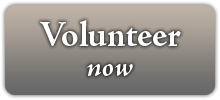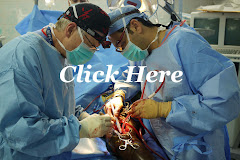This article was originally published in the February 27 edition of The Daily Independent from Ridgecrest, California.
When Allen Patee remembers February 2010, his thoughts will undoubtedly center on a life-changing experience. Patee, a senior medical student at Loma Linda University, recently returned from two weeks volunteering in Haiti.
“A couple of years ago, my class at Loma Linda ‘adopted’ the Hospital Adventiste d’Haiti in Port-au-Prince. Our 170-member class raised $70,000 for equipment, such as autoclaves, for the hospital. Loma Linda oversees 24 hospitals in 16 countries, and over 40 medical clinics, which belong to Adventists Health International,” Patee said.
Loma Linda’s medical students are chosen for commitment to their faith and a desire to serve others. The university is allowing qualified students to take time off and volunteer in Haiti. Patee worked as a firefighter and EMT prior to enrolling in medical school.
“With the needs in Haiti so great, Loma Linda allowed me to go for two weeks and get credit for it,” Patee said.
On a layover in Florida, Patee met another group headed for Haiti — ACTS (Active Community Teams Serving), a non-profit, inter-denominational, faith-based group of volunteers. They had one open seat on their plane, which was landing in Port-au-Prince. Otherwise, Patee would have had to fly into the Dominican Republic and try to make his way across country.
“I flew in with the ACTS group and spent part of my time helping them in medical clinics,” Patee said. “I think God set it up.”
ACTS has a clinic across the street from the hospital, with a fenced back yard. Patee and other volunteers lived in tents in the yard.
“I took a pad to sleep on and a mosquito net. I used someone else’s tent. It’s pretty hot there — a tropical paradise, with mango trees in the yard. I also took a water bottle with a filter on it. There is no sanitation or clean drinking water. The local water works is in shambles. Some volunteers ran a long pipeline from a spring on the mountainside down to the hospital, so that we could have water,” Patee said.
The hospital is completely full, with the overflow patients sleeping on the grounds, under tarps or in tents.
“A couple of years ago, my class at Loma Linda ‘adopted’ the Hospital Adventiste d’Haiti in Port-au-Prince. Our 170-member class raised $70,000 for equipment, such as autoclaves, for the hospital. Loma Linda oversees 24 hospitals in 16 countries, and over 40 medical clinics, which belong to Adventists Health International,” Patee said.
Loma Linda’s medical students are chosen for commitment to their faith and a desire to serve others. The university is allowing qualified students to take time off and volunteer in Haiti. Patee worked as a firefighter and EMT prior to enrolling in medical school.
“With the needs in Haiti so great, Loma Linda allowed me to go for two weeks and get credit for it,” Patee said.
On a layover in Florida, Patee met another group headed for Haiti — ACTS (Active Community Teams Serving), a non-profit, inter-denominational, faith-based group of volunteers. They had one open seat on their plane, which was landing in Port-au-Prince. Otherwise, Patee would have had to fly into the Dominican Republic and try to make his way across country.
“I flew in with the ACTS group and spent part of my time helping them in medical clinics,” Patee said. “I think God set it up.”
ACTS has a clinic across the street from the hospital, with a fenced back yard. Patee and other volunteers lived in tents in the yard.
“I took a pad to sleep on and a mosquito net. I used someone else’s tent. It’s pretty hot there — a tropical paradise, with mango trees in the yard. I also took a water bottle with a filter on it. There is no sanitation or clean drinking water. The local water works is in shambles. Some volunteers ran a long pipeline from a spring on the mountainside down to the hospital, so that we could have water,” Patee said.
The hospital is completely full, with the overflow patients sleeping on the grounds, under tarps or in tents.
“One man, with a broken leg, called me over and asked why we had come. Then he started quoting from Matthew 25:35, “For I was hungry and you gave me something to eat, I was thirsty and you gave me something to drink, I was a stranger and you invited me in, I needed clothes and you clothed me, I was sick and you looked after me.' He was so grateful for our help.
“As I talked to him, I learned that he was an English teacher at the local school. He had 90 children in his class. Only he and 10 of the children survived,” Patee said.
Volunteers have found the people friendly and very thankful for the assistance.
“A doctor in a typical clinic in Ridgecrest will see 30 patients a day,” Patee said. “We saw 65 to 75 per day. When we did clinics in rural areas, we might see 1,000 a day. We traveled in a beat up old bus to the rural areas. When we arrived at one site, the people started singing hymns and praying. They told us they had been praying for someone to come help them and that we were sent from God.”
Most of the acute issues have been handled; now the volunteers are working on basic health issues. Medications are running low — even Advil for pain is in limited supply. Food is distributed from warehouses under the watchful eyes of U.N. guards.
“We can help relieve their pain for a few days, but it’s not a solution. It’s worth the effort and it makes a differnce, but they need so much more,” Patee said.
Haiti is the poorest country in the Western Hemisphere, Patee said, and the people do not have the means to improve conditions. Most eat only one meal a day, if they can find food and have the money to purchase it. Only 25 percent of the population have jobs. People are living on the streets, with an estimated half million homeless. Some have sheets tied between trees for a bit of privacy, but that offers little protection from the rainy season, which will start soon.
“ACTS is looking for volunteers who can help with construction — just basic skills to help put up shelters. You can drive for an hour and see nothing but rubble,” Patee said.
“ACTS also serves hot meals every day. You can find out more about them at ACTSWR.org.”
Round trip flights are about $300 to $400. Volunteers need passports, tetanus, Hepatitis A, and typhoid shots, and a supply of malaria tablets to take each day. They should also bring a water bottle with a filter, mosquito net, sleeping pad, and tent, if possible.
“It’s definitely roughing it, but I’d love to go back.” Patee said. “I was blown away by all of it. We have so much and they have so little. If every American gave 10 cents a day for a month, we could get these people back on their feet.”
When he graduates in May, Patee will be assigned to another facility to train in emergency medicine. When not in school, he lives in Ridgecrest with his wife, Mercedes, who is a flight surgeon for VX-31.
“Mercedes and I have an amazing relationship,” he said. “We pray together every day. We don’t have a TV — our time together is valuable. She was in Iraq for six months last year and I’m gone half of each week for school.”
For more information on Loma Linda’s relief programs, see the Web site www.LLU.edu and look for links to Haiti.
“As I talked to him, I learned that he was an English teacher at the local school. He had 90 children in his class. Only he and 10 of the children survived,” Patee said.
Volunteers have found the people friendly and very thankful for the assistance.
“A doctor in a typical clinic in Ridgecrest will see 30 patients a day,” Patee said. “We saw 65 to 75 per day. When we did clinics in rural areas, we might see 1,000 a day. We traveled in a beat up old bus to the rural areas. When we arrived at one site, the people started singing hymns and praying. They told us they had been praying for someone to come help them and that we were sent from God.”
Most of the acute issues have been handled; now the volunteers are working on basic health issues. Medications are running low — even Advil for pain is in limited supply. Food is distributed from warehouses under the watchful eyes of U.N. guards.
“We can help relieve their pain for a few days, but it’s not a solution. It’s worth the effort and it makes a differnce, but they need so much more,” Patee said.
Haiti is the poorest country in the Western Hemisphere, Patee said, and the people do not have the means to improve conditions. Most eat only one meal a day, if they can find food and have the money to purchase it. Only 25 percent of the population have jobs. People are living on the streets, with an estimated half million homeless. Some have sheets tied between trees for a bit of privacy, but that offers little protection from the rainy season, which will start soon.
“ACTS is looking for volunteers who can help with construction — just basic skills to help put up shelters. You can drive for an hour and see nothing but rubble,” Patee said.
“ACTS also serves hot meals every day. You can find out more about them at ACTSWR.org.”
Round trip flights are about $300 to $400. Volunteers need passports, tetanus, Hepatitis A, and typhoid shots, and a supply of malaria tablets to take each day. They should also bring a water bottle with a filter, mosquito net, sleeping pad, and tent, if possible.
“It’s definitely roughing it, but I’d love to go back.” Patee said. “I was blown away by all of it. We have so much and they have so little. If every American gave 10 cents a day for a month, we could get these people back on their feet.”
When he graduates in May, Patee will be assigned to another facility to train in emergency medicine. When not in school, he lives in Ridgecrest with his wife, Mercedes, who is a flight surgeon for VX-31.
“Mercedes and I have an amazing relationship,” he said. “We pray together every day. We don’t have a TV — our time together is valuable. She was in Iraq for six months last year and I’m gone half of each week for school.”
For more information on Loma Linda’s relief programs, see the Web site www.LLU.edu and look for links to Haiti.


























